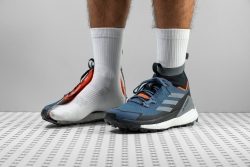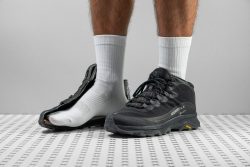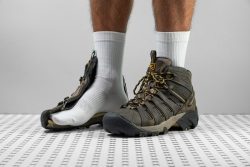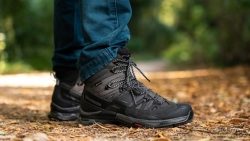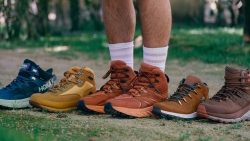3 Best Summer Hiking Boots in 2025

We buy shoes ourselves. We earn commissions when you buy through us, at no extra cost. Why trust us
There is something quite appealing about venturing into the great outdoors as the sun is blessing nature all around. Being in such an environment, of course, calls for the best summer hiking boots.
In order to find the best picks for summer, we tested the boots on the hikes, especially in hot weather, and we also tested their breathability in our lab.
Indeed, the top picks that await you here will exceed your expectations—from the most endearing summer all-rounders to the mightiest backpacking boots.
How we test summer hiking boots
Here, we showcase the finest summer hiking boots known to man. How did we come up with this list? Read further:
- Using our own money, we purchase summer hiking boots (be they cheap or expensive).
- To find out the strengths and weaknesses of these breathable hikers, we hike in every pair for days on various terrains.
- In the lab, we pay special attention to the upper. We examine it under the microscope to look for ventilation holes or understand how thick the treads are. We also cut the shoes in half and note if there are double layers in certain areas that could reduce breathability. We also pump shoes with smoke to visually assess their breathability.
Best summer hiking boots overall
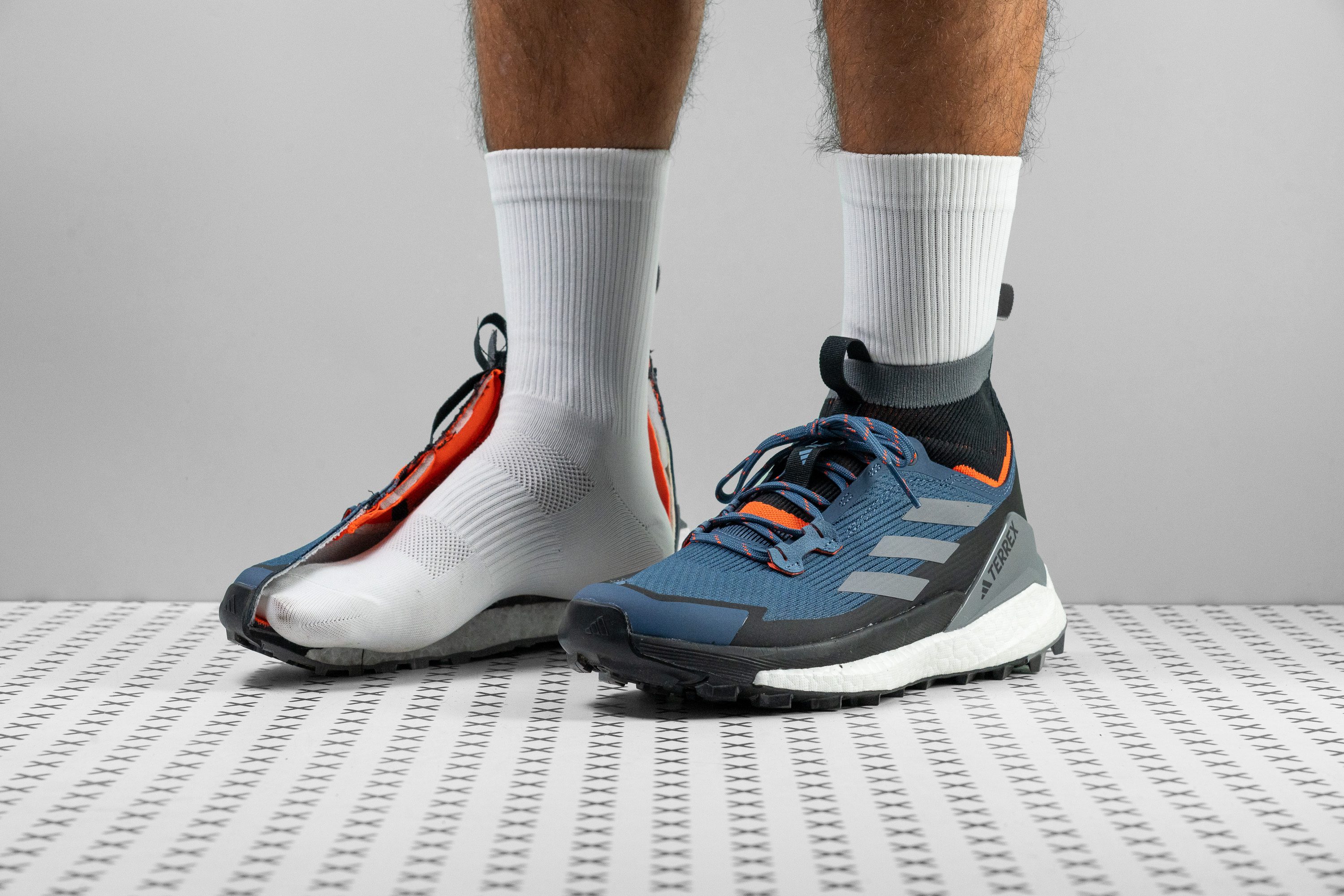













































What makes it the best?
Each stride remains swift and effortless in the Adidas Terrex Free Hiker 2, mirroring the breezy flow of air through its ventilated upper. Even with its light build, its cushion feels enjoyable underfoot. Unquestionably, it emerges as our top summer hiking boot, both in and out of the lab.
We easily blazed our way through rugged trails with the boot’s light and agile nature. At only 15 oz (425g), it’s 16.3% lighter than our current lab average. The ultra-breathable upper adds to its airiness, which our lab tests confirm with a perfect 5/5 score.
We had no restrictions as the boot didn’t resist our foot contortions. True enough, Terrex Free Hiker 2 lives up to its name as our bend test reveals it's 38.6% more flexible than average. Even though we pumped the gas during our hikes, we felt confident we wouldn't slip on any surface. Its 3.7-mm multi-directional lugs proved its traction and effectively shed off mud and debris.
This shoe surprisingly delivered a smooth and energetic ride with its rockered midsole and bouncy cushion. In our energy return test, it impressed with an above-average 66.0% rating, giving a fun pep in every step.
With the boot’s sock-like build, we found it hard to get through the tight opening. But once we were locked and settled in, everything felt easy and smooth.
Pros
- Extremely well-cushioned
- Exceptionally lively and bouncy underfoot
- Luxuriously padded interior
- Grippy and durable lugs
- Tackles wet surfaces confidently
- Very flexible and forgiving
- Excellent airflow
- Feels incredibly stable underfoot
- Supportive heel collar
- Rockered midsole
- Relatively lightweight
- High-quality construction
- Eye-catching design
Cons
- Needs breaking in
- Tricky to put on
- Expensive
Best lightweight summer hiking boots
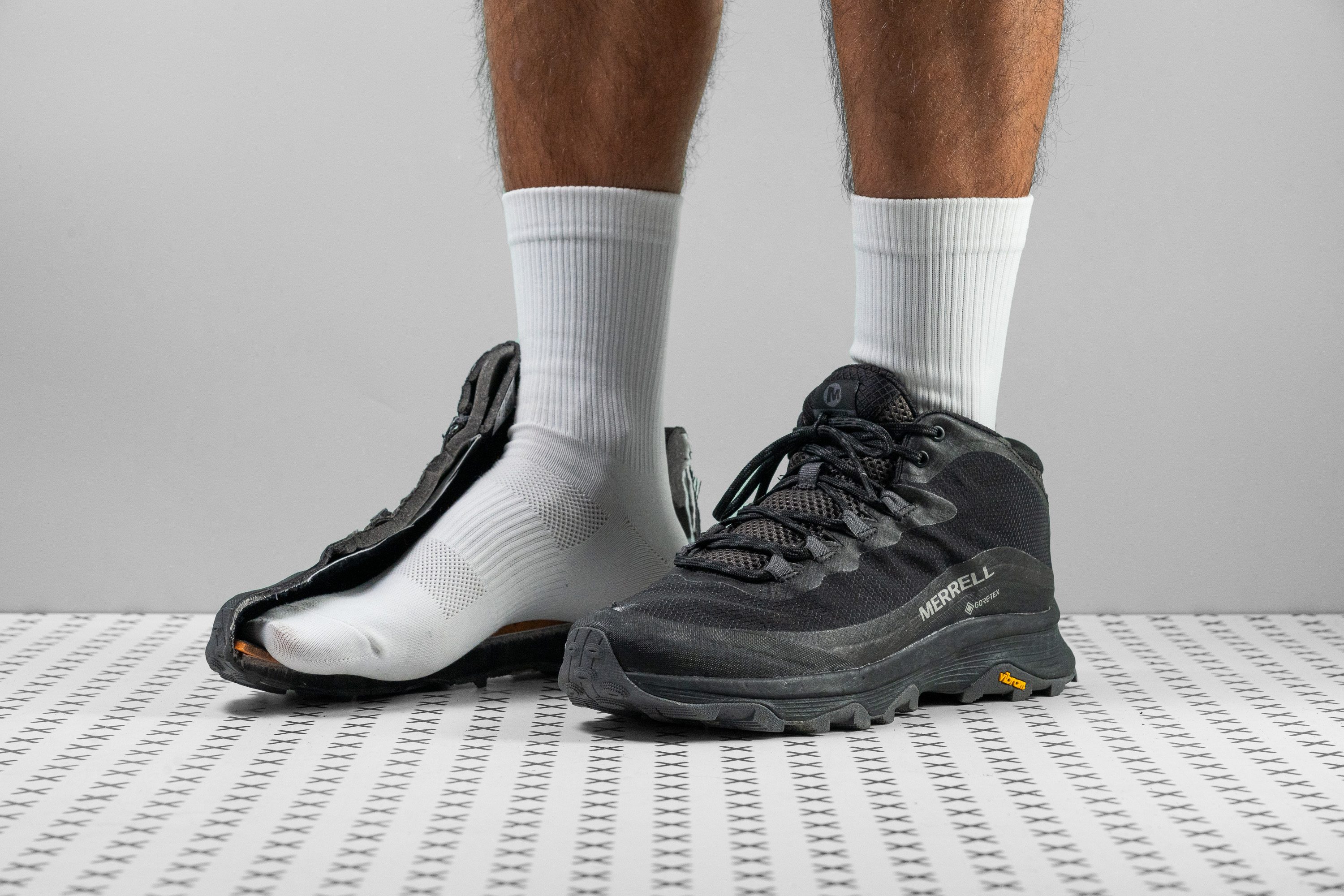







































What makes it the best?
Both the trails and our lab serve as our witness— the Merrell Moab Speed Mid GTX is the ultimate lightweight summer hiking boot. Its one-of-a-kind weightlessness empowers us with speed, agility, and confidence on rugged terrains, complemented by a plush, propulsive midsole and a waterproof yet breathable upper that ensures comfort and protection. Combining the characteristics of a trail shoe with the support of a boot, it delivers an effortless and wonderful hiking experience.
From the moment we lace them up, this boot strikes us with its noticeable lightness. Weighing just 11.7 oz (332g), it's a remarkable 34.6% lighter than the average hiking boot, enhancing our agility and speed without sacrificing comfort.
Featuring a Gore-Tex upper, it shields our feet from moisture without compromising breathability, scoring a remarkable 3/5 on our breathability test. This is rare for waterproof shoes.
The midsole delivers luxurious comfort and propulsive energy, boasting a generous 38.1 mm heel and ultra-plush 18.6 HA cushion. Despite its lightweight construction, it provides stability through its ankle-bolstering collar and grippy 3.5 mm lugs in the outsole, ensuring protection from top to bottom.
However, while the shoe offers stability, it lacks the firm cushion required for extended backpacking adventures. For such endeavors, we recommend a sturdier boot.
Pros
- Instant comfort
- Extremely light
- Unrelenting collar
- Mighty ankle support
- Grippy outsole
- Propelling boot
- Watertight
- Comfy all year round
Cons
- Not ideal for backpacking
- Unruly laces
Best budget summer hiking boots
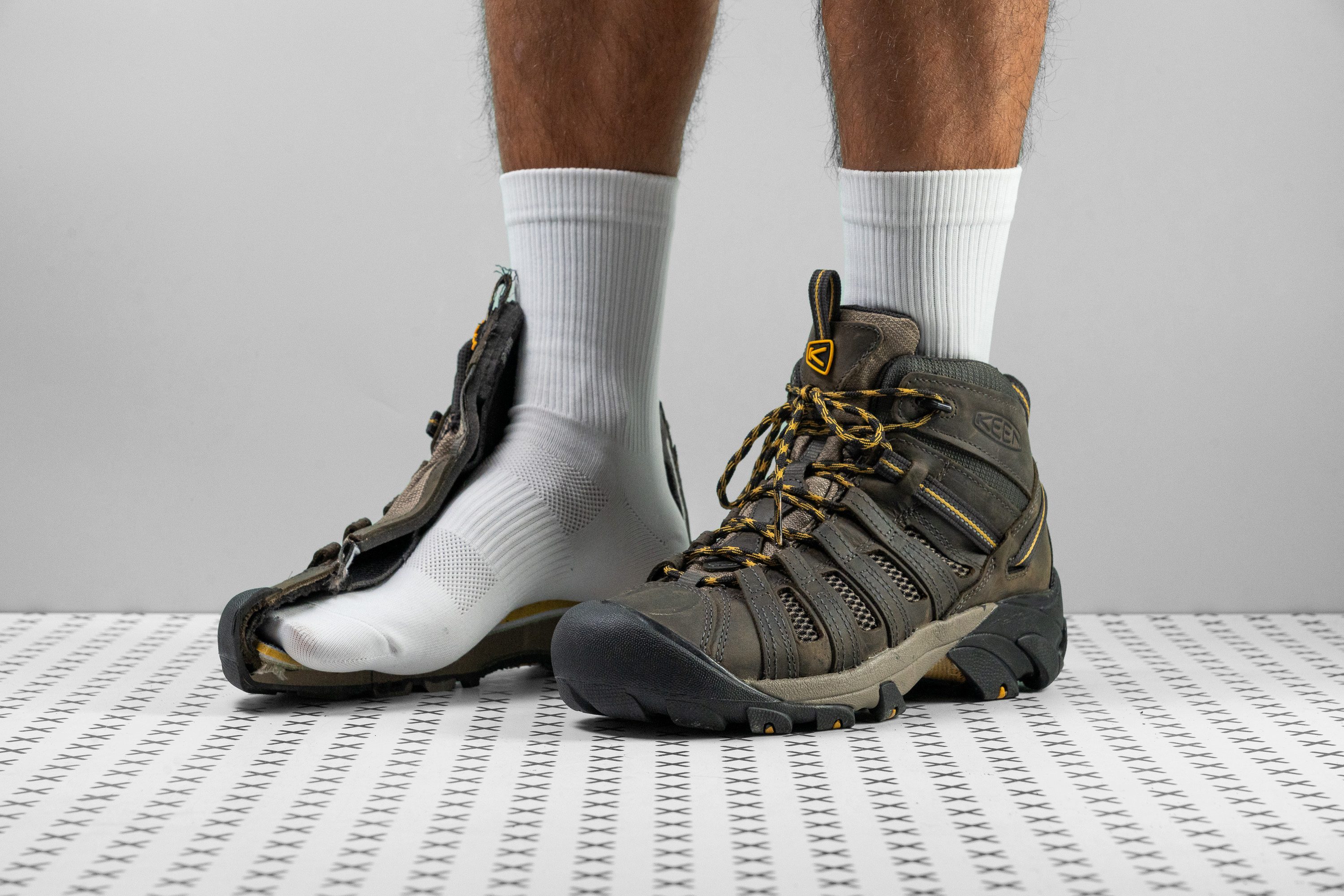








































What makes it the best?
Hiking with the Keen Voyageur Mid proves we can enjoy the protection and comfort of a leather boot in warmer weather—at an affordable price! At only $125, it’s 29% cheaper than the average hiking boot we’ve lab-tested. This boot doesn’t skimp on comfort and protection, ensuring we can enjoy our adventures while feeling safe.
The breeze flowed in and out freely of our boots during humid days. Our smoke test reveals a high 4/5 breathability score thanks to the ventilation holes in the mesh portions of the upper. It also has moisture-wicking materials to ensure our feet stay dry and odor-free even after long hours under the sun.
Another source of our comfort was the cushioned platform with a hint of firmness for stable landings and better support during backpacking. Our heels enjoyed gentle landings with the plush 46.2 mm stack underneath. Meanwhile, our durometer registers a firmer-than-average 29.3 HA, which boosted our surefooted strides.
Further adding to our confidence is the excellent grip Voyageur Mid displays on mixed terrains. Our caliper reveals the sticky lugs are 4.2 mm thick, and are patterned to enhance traction.
What we found disappointing was the subpar adhesion of the outsole to the midsole. During testing, the sole started to peel away, raising concerns about the shoe’s quality and durability.
Pros
- Accommodating fit
- No need to break in
- Excellent traction
- Lightweight
- Sufficient ankle support
- Laudable breathability
- Quick drying
- Versatile
Cons
- Sole started peeling off
- Questionable construction quality
- Too wide for narrow feet
3 things you should know about summer hiking boots
Here are 3 things to focus on when it comes to summer hiking boots:
- They are breathable. Of course, legit hiking boots can never be as breathable as a summer running shoe. But they are more breathable than the heavy hiking boots meant for cold and wet weather. Unlike summer hiking boots, winter boots usually have more layers, insulation, waterproof membranes, etc.
- Lugs meant for dry summer weather can be on the shallow side, unlike those for wet weather which tend to be ~4mm deep.
- Summer hiking boots weigh less than winter hiking boots because there are no layers and they are less rugged.
Breathability lab tests on hiking boots: smoke machine
Not all hikers sweat the same and not all of them wear the same socks or hike in the same temperatures. That’s why, next to testing the boots on the trails, we also perform a standardized lab test for breathability.
Breathable vs. non-breathable hiking boot during the smoke test in the lab
We pump the smoke into the boot and watch where it comes out and at which pace. Based on this, we assign a 1-5 breathability rating to each boot: 5 being the most breathable and 1 the least.
Here, it’s important to understand that hiking boots are generally less breathable because they are made of thicker materials with the purpose of keeping our feet safe and protected. Currently, based on our lab tests, the average breathability for hiking boots is 1.5. For context, in running shoes, the average sits at 3.8, and for hiking shoes, it’s 2.8.
Summer hiking boots under the microscope
To dig even further into breathability, we also look at the upper under the microscope.

When zoomed in, it’s easy to understand why some boots breathe better than others.
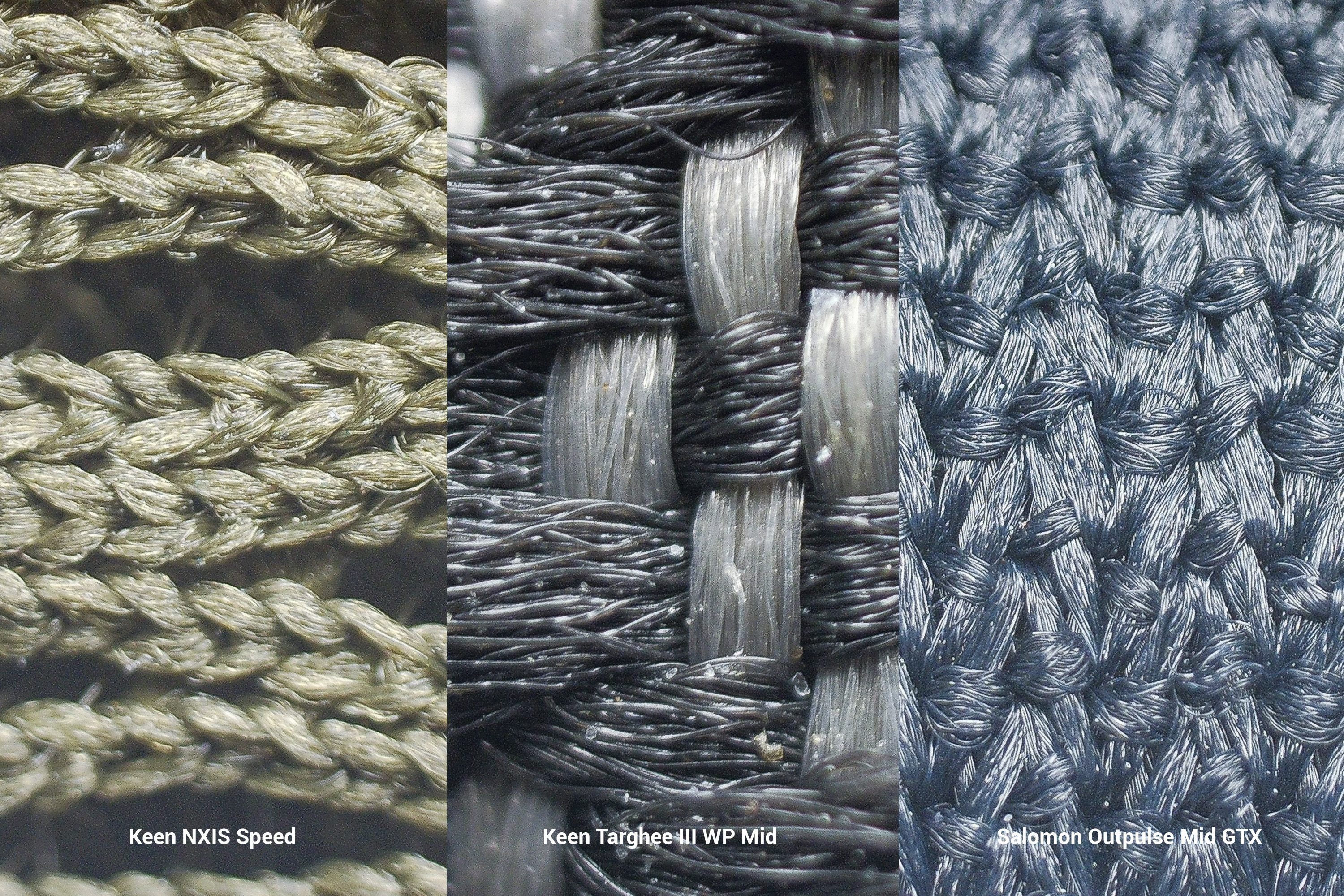
Layers are NOT your friends
What’s inside summer hiking boots? After pumping the smoke into the boots and looking at the upper under the microscope, we cut the boots in half and look at what’s inside. We also do this against the flashlight to see where the air could potentially come out.
Looking at the upper against the light
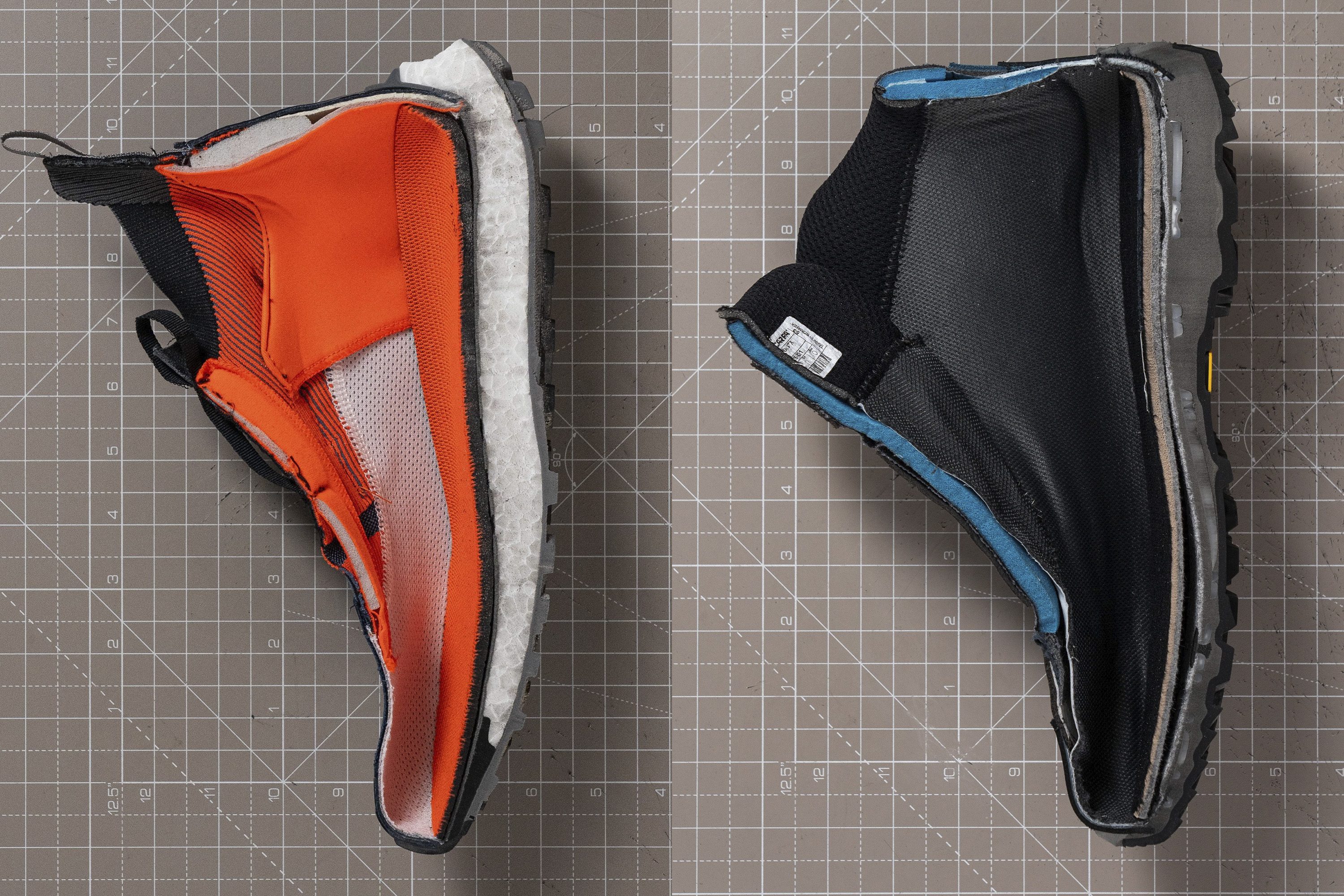
Best grip for summer hikes
Hiking in hot, dry weather simplifies the grip story because you don’t need to look for deep lugs or worry about how slippery the rubber is on wet surfaces.

Our general recommendation is to use boots with 2-3 mm deep lugs in summer. Above 3 mm, and especially above 4 mm, is best for snow, slush, mud. Lugs shallower than 2mm are often found in trail running shoes and those are meant for road-to-trail runs.
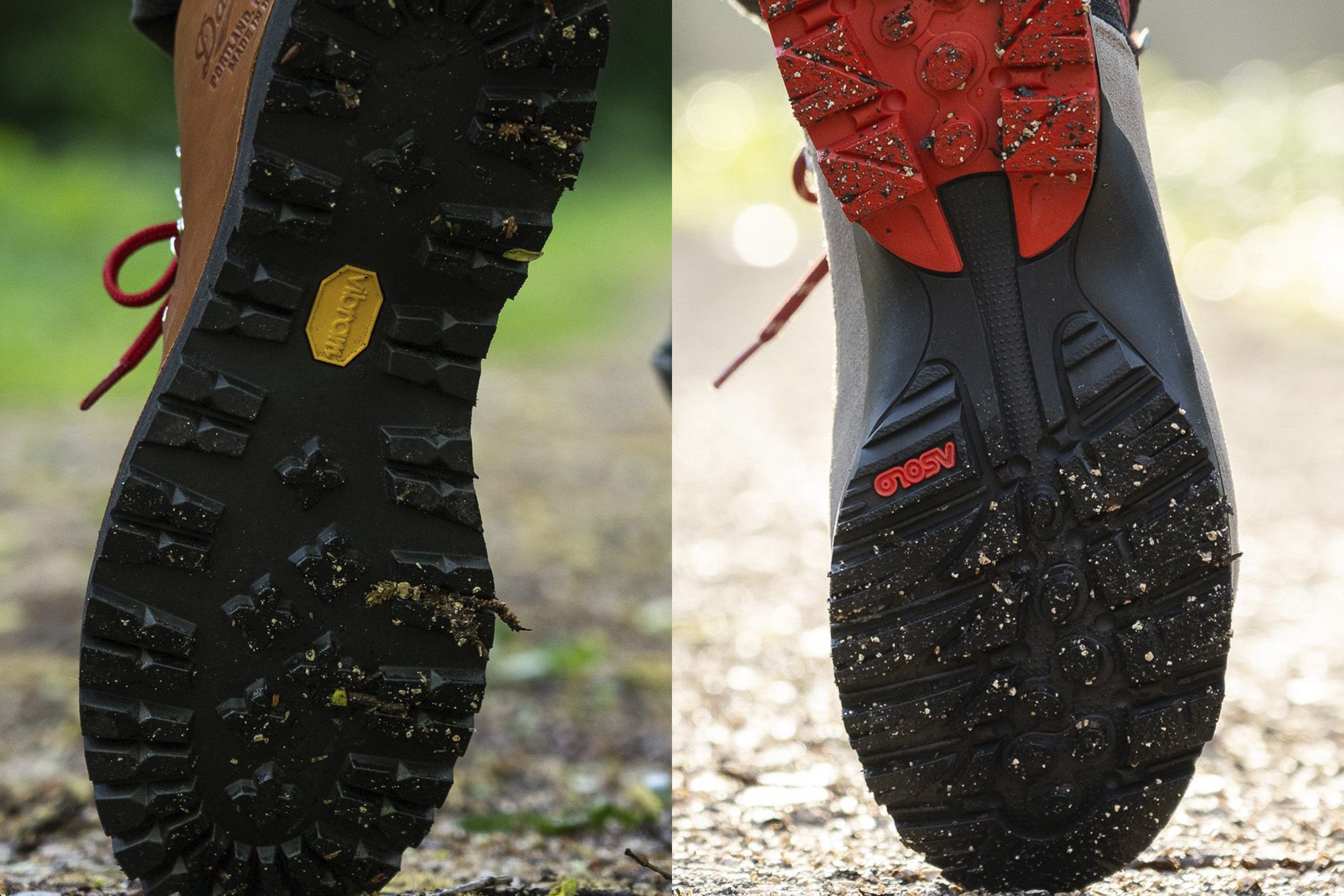
Durability of summer hiking boots
Just because there’s less material and the lugs are shallower, does that mean that the summer hiking boots are less durable than winter boots? Let’s find out.
In our shoe lab, we use a Dremel to test the durability of the a) toebox b) heel padding and c) outsole. Given that the focus here is on the upper, we’ll start with that one.
Toebox durability test
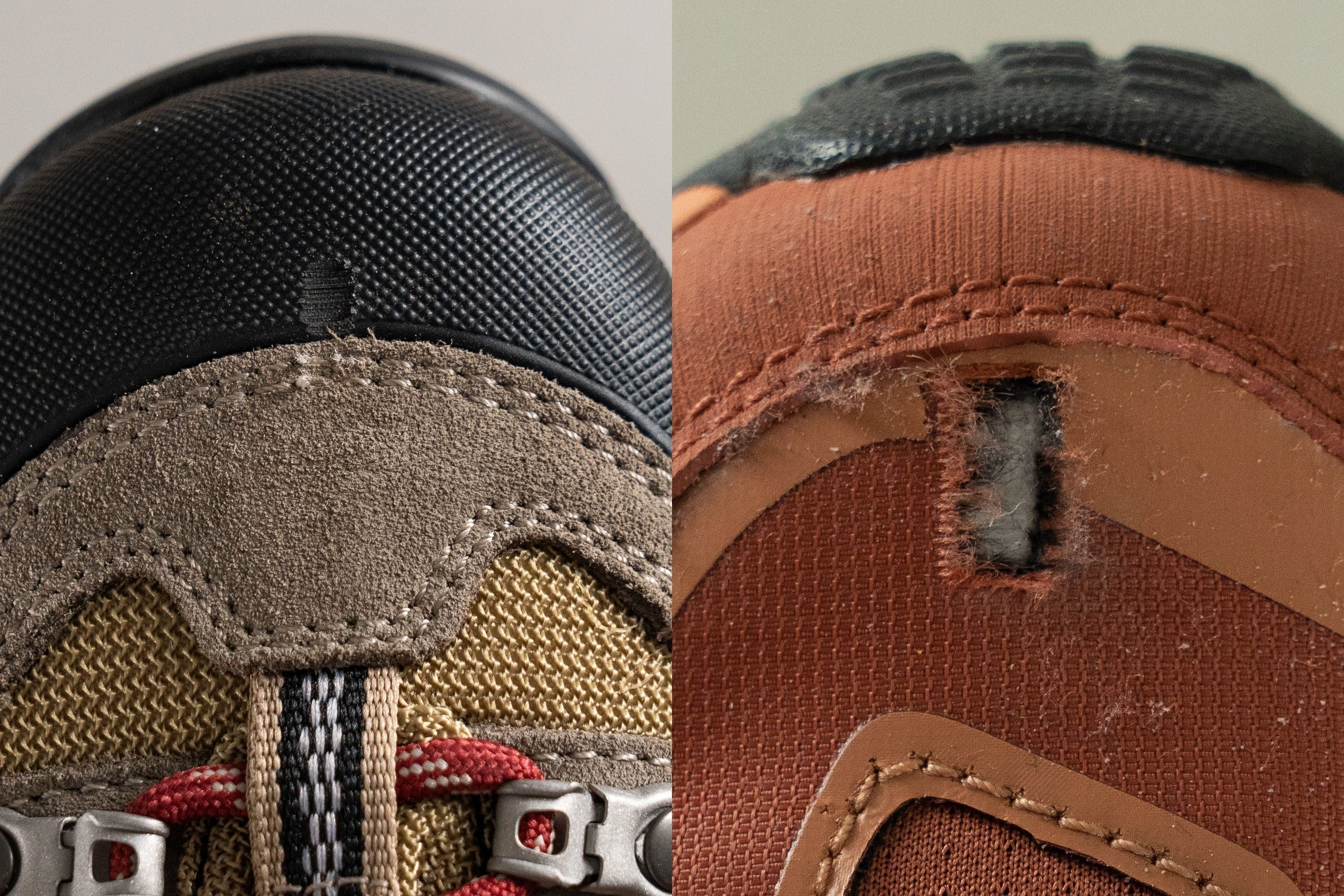
When testing the durability of the upper and the heel padding, we assess the damage on a 1-5 scale, where 1 is the least durable.
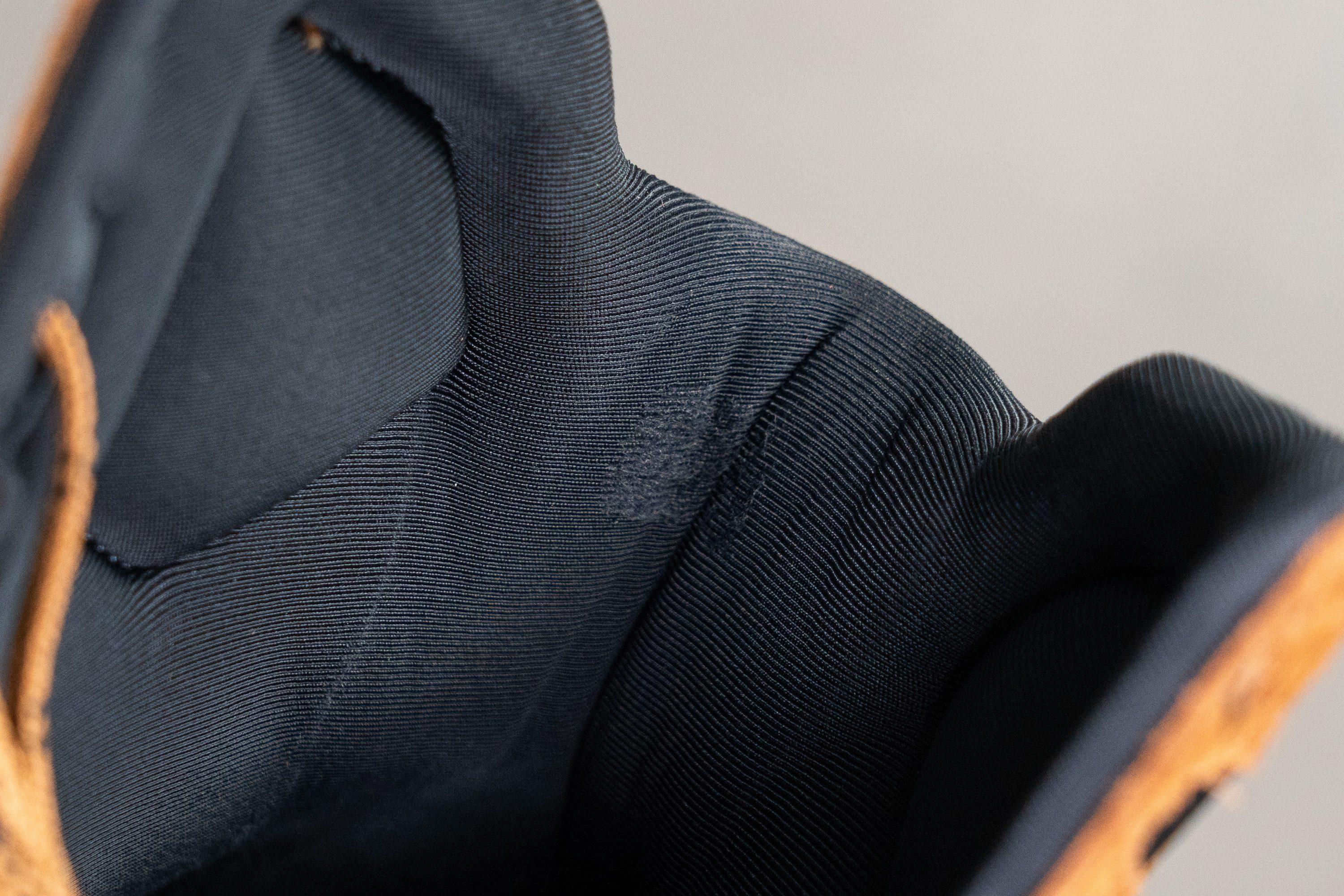
However, when we test the durability of the outsole, we don’t have to assess the damage. We use a tire tread gauge to precisely measure how deep the dent made by the Dremel is.
Testing the durability of the outsole in RunRepeat lab

Light or heavy summer hiking boots?
Summer hiking boots are lighter on average because, as mentioned above, the lugs don’t have to be so deep, and there are no insulating or waterproof layers.
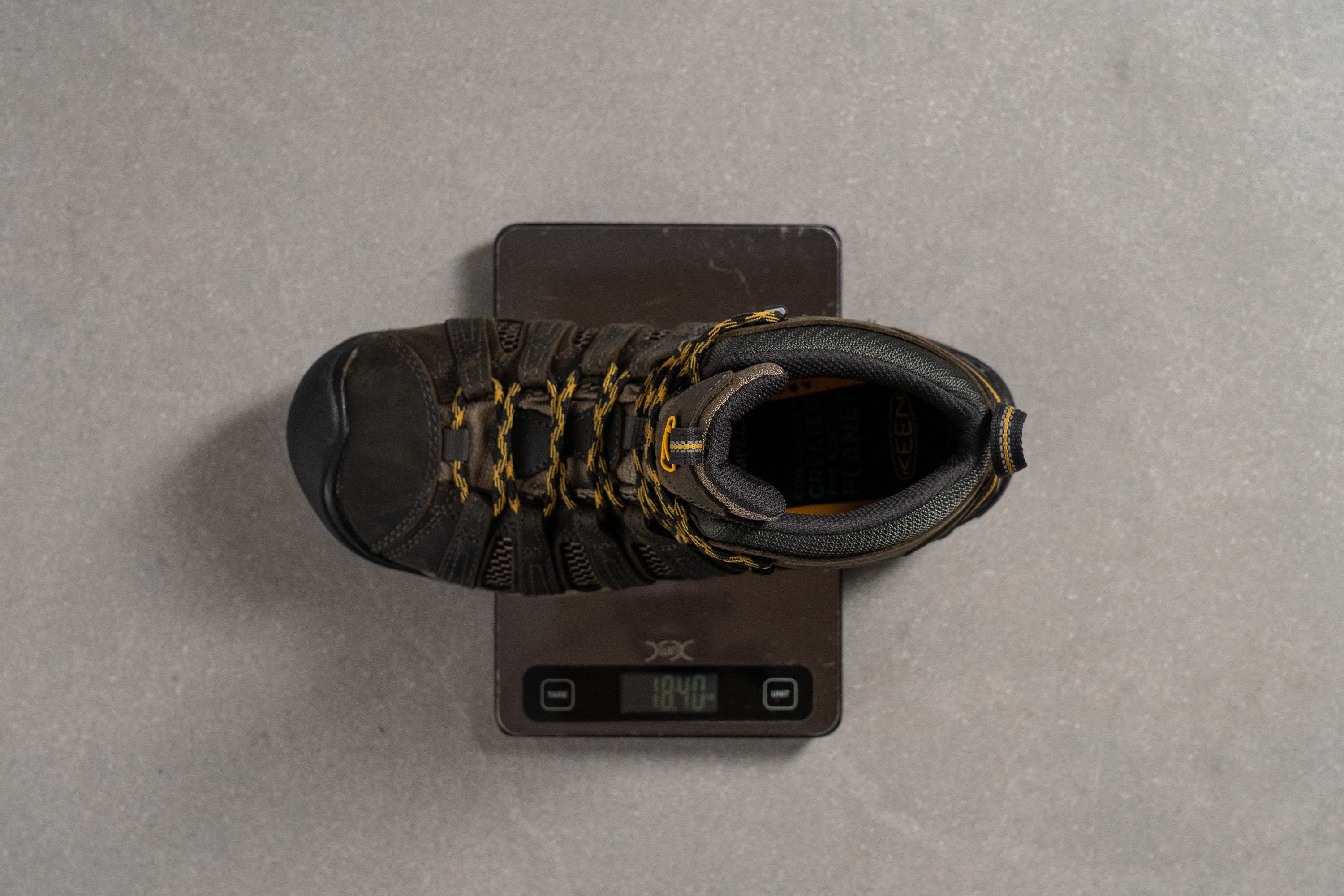
However, that does not mean that all summer hiking boots weigh as hiking shoes because they are boots, after all, and they should offer much more protection.
Best socks for hiking in summer
However breathable the boots are, in hot weather,, our feet are going to sweat. From our experience, finding thin, lightweight wool socks or bamboo socks helps A LOT. They are sweat-wicking and breathable.
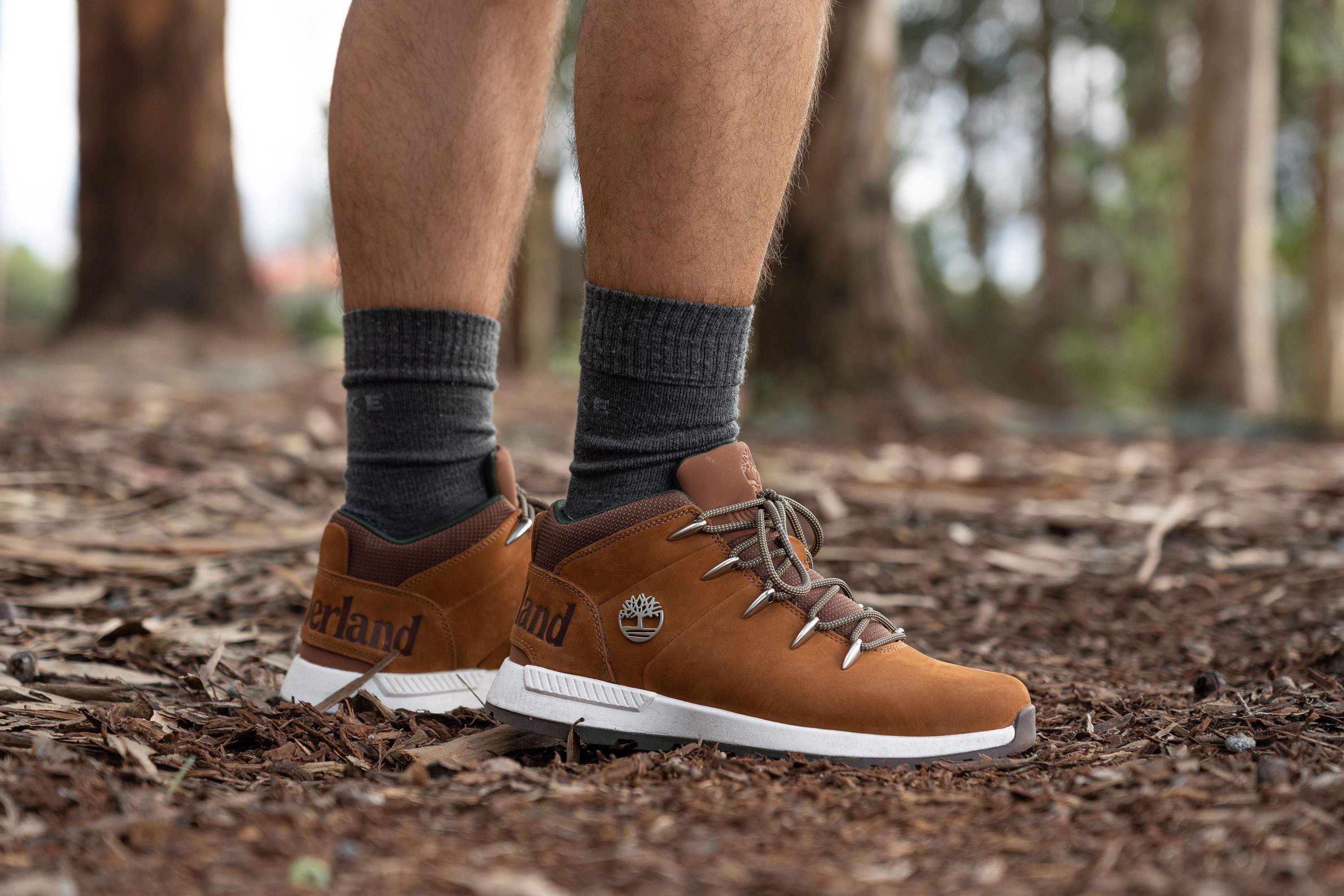
We would recommend avoiding cotton socks. Soaked cotton, in combination with heat and sweat, can lead to very painful blisters.

